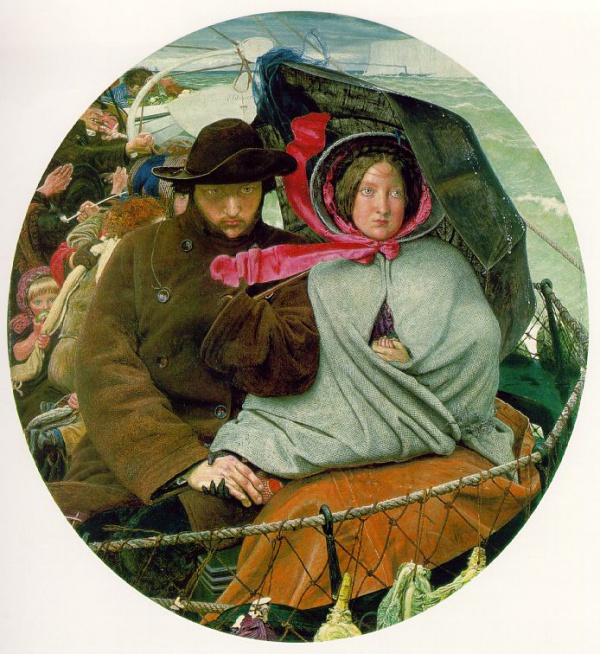Facts About The Last of England
"The Last of England" is a captivating oil painting created in 1855 by Ford Madox Brown. This extraordinary piece is housed at the Birmingham Museum and Art Gallery. The artwork poignantly depicts two emigrants—a man and his wife—leaving England for Australia with their baby. Brown was inspired to begin this painting in 1852, following the emigration of his friend, Thomas Woolner, to Australia.
In the painting, the man and woman, modeled after Brown and his wife Emma, gaze ahead with stoic expressions as they embark on their journey. The scene is rich with detail, depicting other passengers on the ship and provisions for their voyage. Brown’s use of luminous colors and meticulous attention to detail are hallmarks of the Pre-Raphaelite movement, to which he belonged.
One of the striking features of the painting is its oval format, which underscores the couple’s journey and the uncertainty they face. The background figures are compressed, adding a sense of urgency and intensity to the scene. This piece is highly regarded for its emotional depth and the way it captures the bittersweet experience of leaving one’s homeland.
Interestingly, there are two finished versions of "The Last of England." One is in Birmingham, and the other is at the Fitzwilliam Museum in Cambridge. There are also various replicas and studies of the painting, each with slight variations in color and composition. Since its creation, the painting has grown in popularity and has been ranked in several polls as one of Britain’s favorite artworks.

 Ireland
Ireland